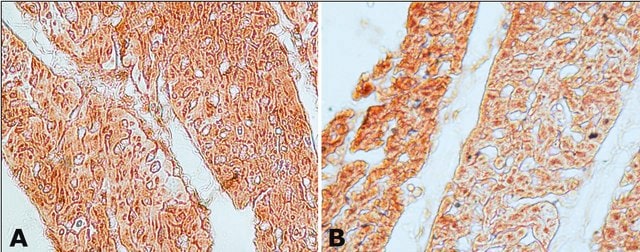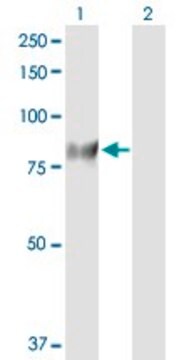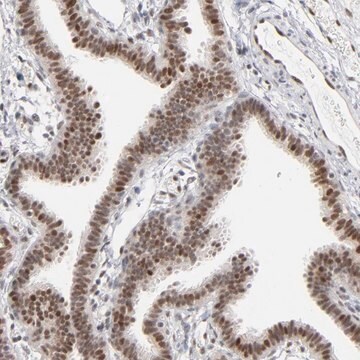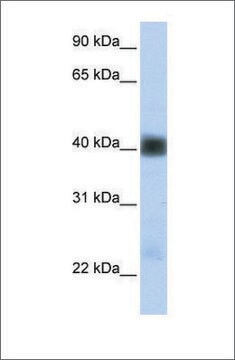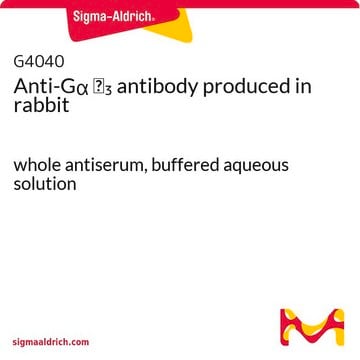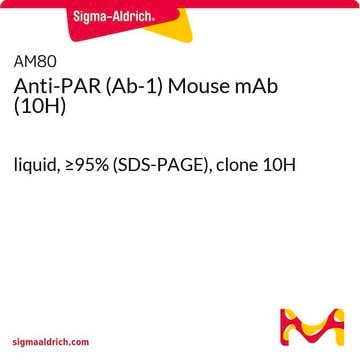G4280
Anti-Guanylyl Cyclase α1 antibody produced in rabbit

IgG fraction of antiserum, buffered aqueous solution
Sinônimo(s):
Anti-GC-S-alpha-1, Anti-GC-SA3, Anti-GCS-alpha-3, Anti-GUC1A3, Anti-GUCA3, Anti-GUCSA3, Anti-GUCY1A3, Anti-MYMY6
Selecione um tamanho
Selecione um tamanho
About This Item
Produtos recomendados
fonte biológica
rabbit
Nível de qualidade
conjugado
unconjugated
forma do anticorpo
IgG fraction of antiserum
tipo de produto de anticorpo
primary antibodies
clone
polyclonal
Formulário
buffered aqueous solution
peso molecular
~80 kDa
reatividade de espécies
mouse, rat, human, bovine
embalagem
antibody small pack of 25 μL
validação aprimorada
independent
Learn more about Antibody Enhanced Validation
técnica(s)
immunohistochemistry (formalin-fixed, paraffin-embedded sections): 1:100 using trypsin-treated human, bovine and mouse heart tissue
immunoprecipitation (IP): 5-10 μg using 60-120 μg of a cytosolic fraction of rat brain
western blot: 1:10,000 using cytosolic fraction of rat brain
Condições de expedição
dry ice
temperatura de armazenamento
−20°C
modificação pós-traducional do alvo
unmodified
Informações sobre genes
human ... GUCY1A3(2982)
mouse ... Gucy1a3(60596)
rat ... Gucy1a3(497757)
Descrição geral
Imunogênio
Aplicação
It was used as a primary antibody for immunohistochemical:
- localization of α1 subunits of sGC (soluble guanylate cyclase) in the guinea pig gastrointestinal tract
- detection of expression of sGC in the vasculature of rat skeletal muscle
- localization of the functional subunit of NO receptors, sGCα1 in guinea pig caecum
Ações bioquímicas/fisiológicas
forma física
Exoneração de responsabilidade
Não está encontrando o produto certo?
Experimente o nosso Ferramenta de seleção de produtos.
Código de classe de armazenamento
12 - Non Combustible Liquids
Classe de risco de água (WGK)
WGK 1
Ponto de fulgor (°F)
Not applicable
Ponto de fulgor (°C)
Not applicable
Escolha uma das versões mais recentes:
Já possui este produto?
Encontre a documentação dos produtos que você adquiriu recentemente na biblioteca de documentos.
Active Filters
Nossa equipe de cientistas tem experiência em todas as áreas de pesquisa, incluindo Life Sciences, ciência de materiais, síntese química, cromatografia, química analítica e muitas outras.
Entre em contato com a assistência técnica